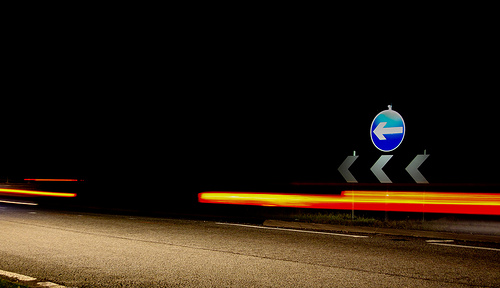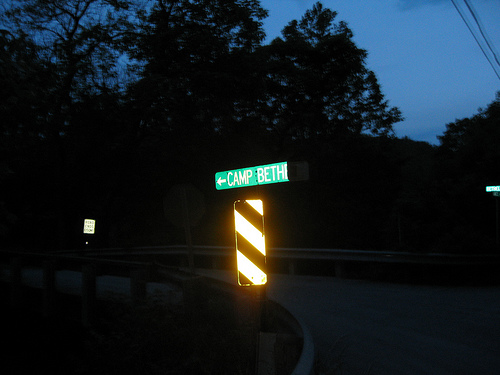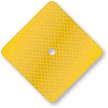Reflectivity celebrates its 75th anniversary
Technology is easy to take for granted — consider the often-forgotten reflective road signs that punctuate our highways, warning and guiding drivers throughout all hours of the night. Seventy-five years ago, an innovation at the 3M Company set the groundwork for today’s reflective signage, a development that has improved driver and pedestrian safety ever since.

From IDS.photos.
Reflective material originally sprung out of 3M’s Central Research Laboratory, which was formed in 1937 “to pursue research in technologies with long-term potential,” according to the company. The first reflective sheeting sign, using glass beads, was created in 1939.
An early iteration, using reflective tape, contained thousands of reflective beads which reflected the light from car headlights, causing the material to illuminate — even at night. The reflective tape wouldn’t stick to asphalt, though, so 3M engineers applied it to traffic signs in an engineering development that we continue to rely upon today.
Reflective signs are created using reflectivity. How does reflectivity work? Judy Vickers, who worked at 3M as a Process Engineer, Manufacturing Technology Engineer as well as in product development, explains, “The basic idea is that you shine light on the reflective surface and instead of scattering, the light is directed back at the source.”
There are three different types of reflectivity, according to 3M: diffuse, mirror, and retroreflective, each caused by different surfaces. Diffuse reflection occurs when light hits “rough surfaces,” like pavement and vehicles; because these surfaces force light to scatter, diffuse reflection offers minimal nighttime visibility.
Mirror reflection happens when light hits glossy or smooth surfaces, reflecting light at a right angle; though this type of reflectivity does create light, the majority of roads’ mirror surfaces will reflect light at angles away from drivers’ eyes.

Retroreflectivity in action. From Jack Edge.
Retroreflection, on the other hand, relies on tiny glass beads to reflect light and boasts high visibility. Retroreflective materials seem brightest to anyone located near a light source — such as a driver and the drivers’ headlights — and located at just about any angle. This makes it an ideal option for road signs.
Through the years, there have been a variety of significant updates and improvements to reflective signage. In 1965, 3M introduced reflective road marking tape; in 1989, the company’s Diamond Grade LDP Reflective Sheeting was developed, which provided three-times the brightness offered by a glass bead version.
More recently, in 2006, a product targeted for emergency service vehicles hit the market, offering high reflectivity. That same year, 3M also released Diamond Grade DG³ Reflective Sheeting specifically for traffic signs, meeting “more of the minimum recommended luminance index” than other sheeting options.
Some of the most significant reflective safety products include “pavement markings — think of the big white blocks in intersections and the double yellow lines, white skips, etc.,” says Vickers. “There are also raised pavement markings which are placed on roads which are raised so that drivers can see them in the dark even when it’s raining. Snowplows tend to shear them off of the road, so they’re mostly used in warmer locations.”
Other reflective products include license plates and vehicle markings, which “help to make a parked car visible,” explains Vickers. “Semi-trucks have a red and white strip around the trailer to enhance their visibility at night. Look around the bottom of any truck trailer and you’ll see it. The US Postal Service’s trucks also have red, white, and blue stripes around their trucks. All are to enhance their visibility so that drivers will see them at night.”
While license plates and directional and information signs, such as highway and stop signs, are the most common applications for reflective material, there are some other uses. “The most unusual are SOLAS sheeting (Safety of Life at Sea): They put reflective sheeting on life jackets so that they can be easily spotted in the water,” says Vickers. “There’s also a reflective fabric that goes into various applications like safety vests worn by construction workers and even athletic wear, so that runners are visible.”
Even as traffic safety has evolved, reflective signs have continued to prove their style=”line-height: 1.5em;” benefits , including minimal maintenance costs, lowered pollution, and energy efficiency. One study discovered a link between the brightness of a sign and a driver’s ability to understand the sign. Drivers were able to read and understand bright signs “substantially faster.” Brighter signs mean faster reading time — which translates into more time to focus on safe driving.
Category: Behind the curtain, Infrastructure, Resources, Road safety

















